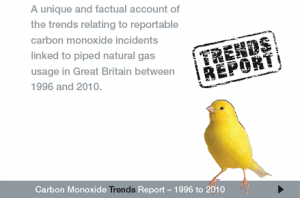A report published by the Gas Safety Trust reveals that the risk to someone over 70 being fatally injured by Carbon Monoxide (CO) is now 5 times that of anyone younger.
 |
| [relatedPosts title=”Related Posts”] |
|
|
The shocking statistic was revealed in the Carbon Monoxide Trends Report, which provides a factual account of the trends relating to reportable CO incidents linked to natural gas usage in Great Britain between 1996 and 2010.
The report, which was commissioned by The Gas Safety Trust and part-funded by LABC, the representative body for building control teams in local authorities, revealed that older gas appliances pose a greater risk to CO incidents, with more than two thirds of CO incidents reported involved central heating appliances, of which 50% were older central heating boilers.
It also suggested a possible link between financial pressures leading to cost cutting on home maintenance and an increased risk in exposure to CO.
The evidence suggests that a greater number of CO incidents have tended to involve appliances for which no service contract is in place – the most frequent cause of incidents established following investigation has been lack of servicing.
“The elderly can be financially constrained and many fit into the asset rich, cash poor category, which means they may have a different perspective on replacing or servicing their gas appliances.’ commented Nigel Dumbrell, Head of Charitable Operations for the Gas Safety Trust.
“They also tend to spend a disproportionately large amount of time indoors and in the home compared with other age groups. This fact, coupled with the probable insensitivity to the physiological effects of CO compared with others makes the elderly significantly more vulnerable and at risk of being fatally injured as a result of natural gas related CO poisoning.” continued Nigel.
With the proportion of gas users aged 70 and over increasing, The Gas Safety Trust is calling for the introduction of schemes whereby help may be given towards the cost of replacing older gas appliances, as well as help towards the cost of regular servicing and maintenance.
The report also revealed that the risk of CO poisoning occurring in a property with a private landlord is 50% greater than that in either an owner occupied property or one with a social sector landlord – placing the elderly living in rented accommodation at the greatest risk of CO poisoning.
The report offers a profile of the most vulnerable group in society who are at risk from exposure to CO, these are people over 70 years of age, living in rented terraced accommodation, built before 1981, using a gas central heating system, which is over 20 years old.
Carbon Monoxide Trends 1996 – 2010 Report is available here.




